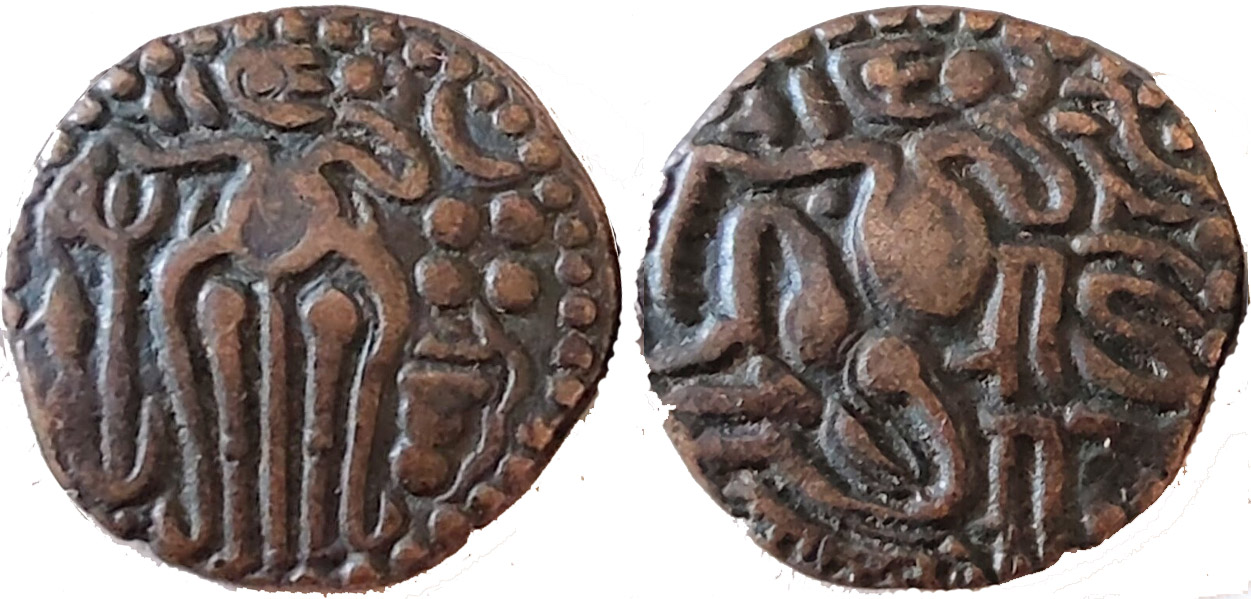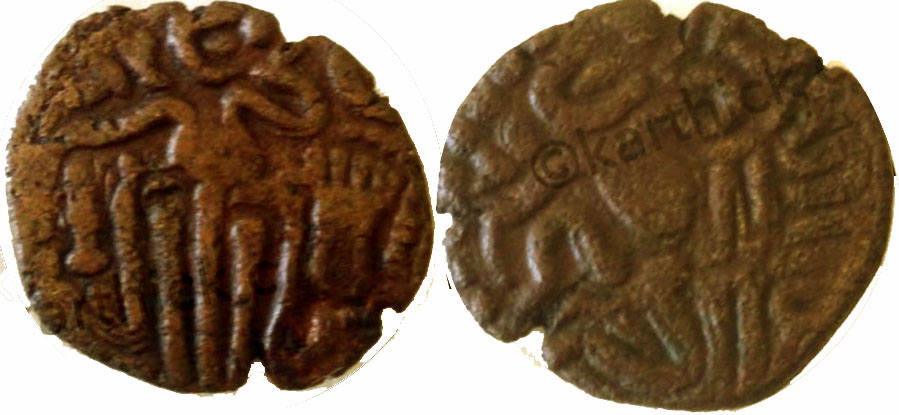| SPECIFICATIONS | |
| Denomination | One massa |
| Alloy | Copper |
| Type | Struck |
| Diameter | 17.7 mm |
| Thickness | 2.0 mm |
| Weight | 3.72 gms |
| Shape | Round |
| Edge | Plain |
| DieAxis | 120° |


Copper massa of RajaRaja Chola (985-1014) of Thanjavur in TamilNadu with Sri Pathula Footprint and may represent the Chola conquest of Lanka in 993 CE.
|

| 
| ||||||||||||||||||||
| Rajaraja Chola | Mitchiner # | |||||||||||||||||||||
My identification of the footprint Symbol to be that used to represent the
Buddha footprint
is since it has toes which are of equal length and has straight sides.

|

|

|

|
I thank Raman Sankaran for the top C.R. Rengaswamy for the middle RajaRaja Chola Padam coin images on the right sent in reply to my FaceBook post. in Indian Coins Collectors Club The bottom coin from 2015 post by Karthick Chandraseka in Facebook group Coin of the Day.
These coins are extensively discussed by Biddulph in his 1966 monogram
on Coins of the Cholas. The Vishnupadnam shown above is
very much like his coins 19 and 20 in this book which are from Lanka
and says Generally much better executed than Indian specimens of
the same type.
Biddulpath coin 21 is from the British Museum and has a large fish in
the place and claimed to represent the Pandya conquest. That too has
no dots or hanging fish on left edge. Bottom Image is from
Numista
So it seems reasonable to infer that the above coin found in Lanka with a footprint with the shape of the "Buddha Footprint" is for the Lankan conquest of 993.
Rajaraja Chola (985-1014) invaded Lanka in 993 CE and conquered the northern half. Ruining Anuradhapura he made Polonnaruwa his capital on the island;. Rajendra (1014-1044) Chola succeeded in extended Chola occupation over the whole island of Lanka in 1018. Lanka became regained independence from Chola occupation in 1070 under Vijaya-bahu (1055-1110).
The massa coin was scanned at 600 dpi and displayed at 300 dpi It was purchased with an old collection from Anuradhapura in 2022 April.
Text edited from
* Coins of the Cholas: C. H. Biddulph, NSI #13, 1966.
* Oriental Coins: Michael Mitchiner,
London, Hawkins Publications, 1978.